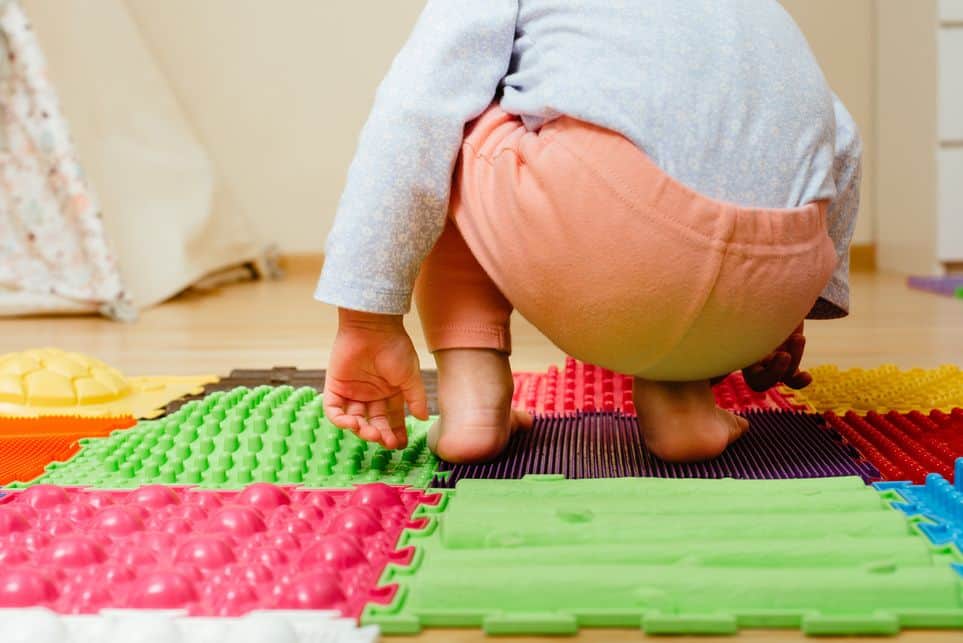Generally, when one hears the term “arthritis”, the image of a middle aged or older adult will often materialize in your mind. Children and adolescents seldom make the cut for the prototypical image of one suffering from an arthritic condition. Though rare, like virtually every other condition or disease, they can and do occur in this demographic as well. The dangers of juvenile idiopathic arthritis (JIA) may be even more insidious and potentially debilitating than the most common type of arthritis which is osteoarthritis in adults.
What is Juvenile Arthritis?
Juvenile idiopathic arthritis or JIA, is a heterogeneous set of seven non-infectious arthritic conditions which result in inflammation, pain, reduced joint mobility, effusion or swollen articular joint tissue and destruction to affected joints. JIA generally presents prior to a child’s sixteenth birthday, and affects approximately 300,000 children in the U.S. The six classifications of JIA include:
1. Oligoarticular arthritis: Arthritis which affects 4 or less joints, hence the term olio- meaning few, and is common in young girls. This is further subdivided into persistent and extended, with extended oligoarthritis affecting up to 5 joints after a duration of 6 months.
2. Polyarticular arthritis: Arthritis affecting 5 or more joints, within 6 months of disease manifestation.
3. Systemic JIA: This type of arthritis may affect one or more joints, and also causes systemic issues such as a fever, rash, hepatosplenomegaly (enlarged liver and spleen), lymphadenopathy (swollen lymph nodes), and serositis which is inflammation of serosal tissues such as those around the heart, lungs and abdominal organs.

The Dangers of Juvenile Arthritis
4. Psoriatic arthritis: Sufferers with this type of arthritis have a first degree relative with psoriasis, and will often be afflicted with psoriasis, edematous or swollen finger digits and nail pitting.
5. Enthesitis-related arthritis: Arthritis associated with the tendons and ligaments that insert into bones of the sacroiliac or lumbosacral regions, which cause pain and inflammation in the lower back, pelvis and buttocks and is more common in males. Diagnosis in addition to the clinical pain features, also include the presence of Human Leukocyte antigen (HLA)-B27. Often these patients have family history of various spine-related arthritic conditions.
6. Undifferentiated JIA: These are conditions that do not meet the aforementioned criteria.
What are the causes?
The precise triggers for disease manifestation remain unknown, but there does seem to be an autoimmune and auto-inflammatory component to these various conditions. These are thought to arise by some unknown genetic and environmental factors.
An autoimmune condition results when one’s endogenous immune system is essentially attacking their own bodily tissues through specific antibody-mediated assault and causing all of the hallmark features that characterize JIA. An auto-inflammatory reaction is where the body’s non-specific, innate immune system mounts an anomalous inflammatory action against those tissues.

The Dangers of Juvenile Arthritis
What are the complications?
A diagnosis of one of these conditions can greatly and adversely impact a child’s quality of life and mental state and can also cause:
- Growth retardation and premature fusion of bone growth plates, and asymmetrical limb lengths.
- Functional disability.
- Bone degradation or erosion at joint surfaces and demineralization, especially if the child has been prescribed corticosteroids.
- Need for surgical joint replacement.
- Eye issues such as uveitis or inflammation of the middle eye which causes pain, redness, blurred vision and even vision loss as a late symptom.
- Joint damage.
- Macrophage activation syndrome, which is associated with systemic arthritis, and is characterized by a fever and rash.
- The macrophages (cells that eat), destroy and cause deficiencies of cells that comprise the blood including platelets that permit clotting, oxygen-transporting red blood cells and immune white cells.
- This can cause disseminated blood clotting, impaired liver function and high liver enzymes, increased triglycerides, and has a high mortality risk that necessitates prompt treatment.
- Psoriasis.
- Another potential complication of systemic arthritis is pericarditis or pleuritis of the heart and lungs, respectively.

The Dangers of Juvenile Arthritis
What can be done?
Typical medical treatment for JIA includes NSAIDs, pain relievers, and various biological and non-biological anti-rheumatic drugs that dampen the immune response that cause damage to joint and skeletal tissues among other affected organs and tissues. Other treatments may include intra-articular corticosteroid injections to ameliorate joint inflammation, and short courses of oral corticosteroids for severe and systemic disease.
The healthcare team involved in helping a child afflicted with JIA may include a primary physician, rheumatologist, an occupational therapist, physiotherapist, dietician, mental health specialists, ophthalmologists, orthotists and orthopedic surgeons. Other non-pharmaceutical interventions include:
- Physical therapy and low impact exercise or aquatic exercise to increase bone mineralization, increase mobility, benefit cardiovascular health and muscle strength and help reduce pain.
- Orthotics such as splints and foot orthotic inserts and assistive devices to stretch contracted joints to maintain function, support limbs and stabilize joints while promoting good limb and joint alignment.
- Heat and cold therapy for pain and inflammation relief.
- Diet therapy: Recommendations to follow an anti-inflammatory diet rich in omega 3 and monounsaturated fats, fiber, fruits and vegetables while also emphasizing bone building nutrients such as vitamin D in fortified foods and fish, as well as calcium in canned fish, dairy, soy products and leafy green veggies. Attempting an elimination diet and eliminating nightshade produce with the help of a dietician may help assess potential roles certain foods play in modulating or promoting inflammation or affecting nutrient absorption.
- Supplementation: Corticosteroids, reduced physical activity and poor dietary intake of bone mineralizing minerals and vitamins can stunt growth and lead to osteoporosis and osteopenia. Supplementing with calcium and vitamin D, is therefore recommended for these kids.
- Other supplements include antioxidants which attenuate inflammation such as resveratrol, Boswellia serrata, and turmeric (contains curcumin), with the addition of pepperin-containing black pepper for enhanced absorption. Other compounds that comprise connective tissues in joints may also help to rebuild and slow the progression of arthritis, such as collagen type 2, glucosamine, chondroitin sulfate and hyaluronic acid.
- Our JointFuel360 supplements have been specially formulated to help people suffering from various forms of arthritis including JIA. It contains compounds including Boswellia, black pepper, turmeric, resveratrol as well as collagen type 2 and hyaluronic acid.
References
Sherry, D. D. (2021, July 12). Juvenile idiopathic arthritis. Practice Essentials, Background, Etiology and Pathophysiology. Retrieved December 23, 2021, from https://emedicine.medscape.com/article/1007276-overview
Stines, Y. (2021). 20 supplements and vitamins for arthritis. Verywell Health. Retrieved December 23, 2021, from https://www.verywellhealth.com/vitamins-and-supplements-for-arthritis-5093745#toc-dimethyl-sulfoxide-dsmo
Temple, L. M. (2016). Integrative treatment approaches for juvenile idiopathic … Practical Pain Management. Retrieved December 23, 2021, from https://www.practicalpainmanagement.com/treatments/complementary/integrative-treatment-approaches-juvenile-idiopathic-arthritis
Temple, L. M. (2016). Juvenile Idiopathic Arthritis Symptoms and Diagnosis. Practical Pain Management. Retrieved December 23, 2021, from https://www.practicalpainmanagement.com/patient/conditions/rheumatoid-arthritis/juvenile-idiopathic-arthritis-symptoms-diagnosis
The Royal Australian College of General Practitioners . (2009). Clinical guideline for the diagnosis and management of Juvenile Idiopathic Arthritis. Retrieved December 23, 2021, from https://www.racgp.org.au/FSDEDEV/media/documents/Clinical%20Resources/Guidelines/Joint%20replacement/Clinical-guideline-for-the-diagnosis-and-management-of-juvenile-idiopathic-arthritis.pdf
Van Meer, A. (2011). JUVENILE IDIOPATHIC ARTHRITIS. McMaster Pathology Review. Retrieved December 23, 2021, from http://www.pathophys.org/jia/#Treatment
